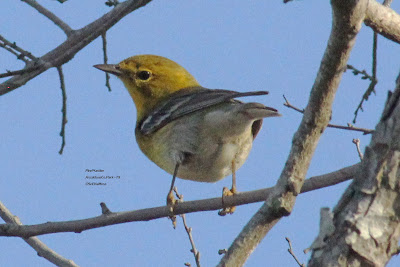Rare Royal Tern flying Rio Grande River off Anzalduas

While I was at Anzalduas County Park today other birders pointed out this Royal Tern flying over the Rio Grande River. It was originally found before today but it flew by twice while I was there this afternoon. I was told that this species while common along the coast is quite rare inland. After flying around for awhile late this afternoon it landed and rested there for at least a half hour. I checked the light organish color of it's bill and it is accurate for what I saw in the field. It is also about the same color as some of the excellent photos of this bird I found on the internet. The bottom pic shows field marks including the heavy bill, white forehead and crown; and narrow black band around back of head. SeEtta








